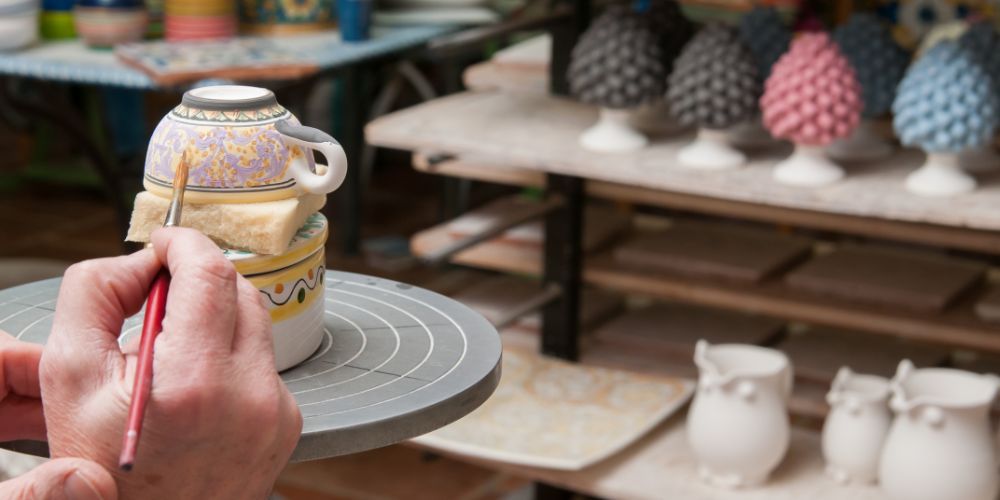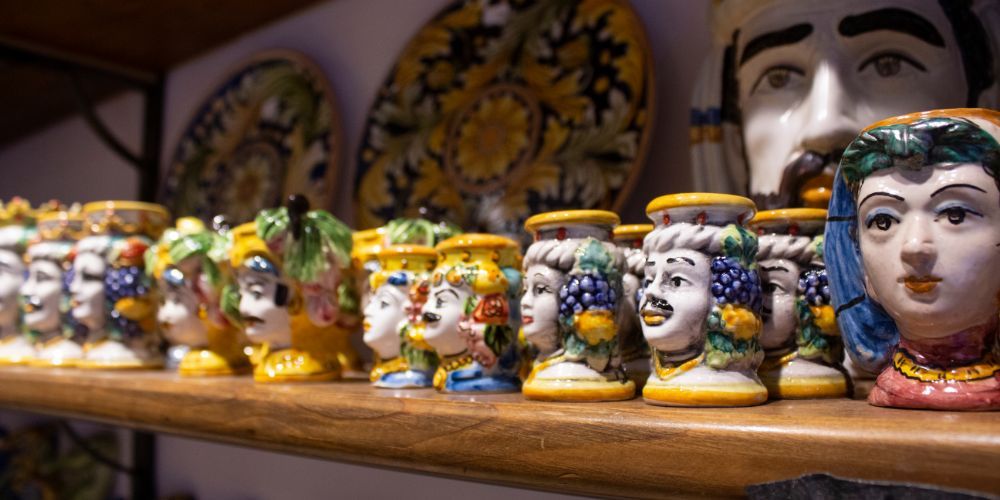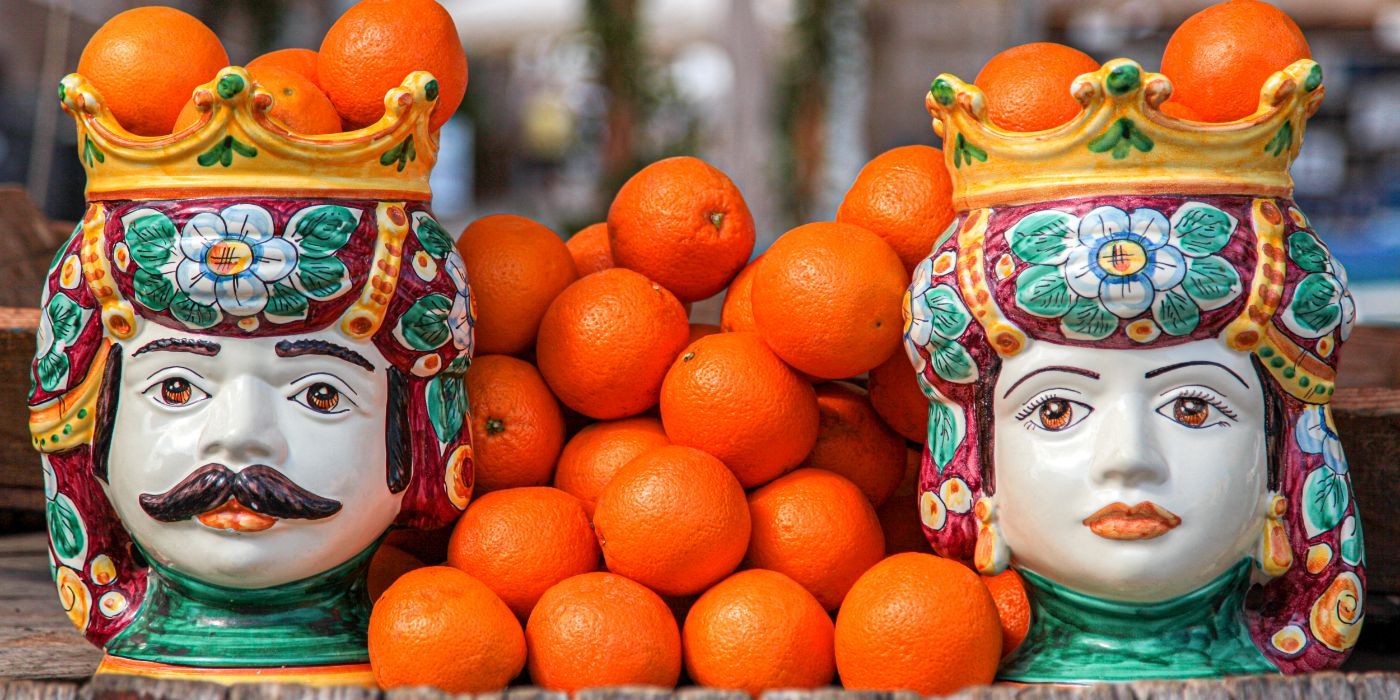The Moors Heads are typical Sicilian ornamental vases. Made of hand-painted ceramic, they resemble the faces of a man and a woman and although they are among the most popular souvenirs of Sicily, there is actually much more to these vases. They represent not only the mastery of local artisans, but also an ancient and sad legend which has its roots in history, and which has come down to us thanks to these artefacts.
The Moors Head vases, also called Graste in Sicilian dialect, are widespread throughout the island, but Caltagirone is considered their homeland. This city, in fact, is famous for its wonderful handmade pottery, which is among the most original and authentic products of the rich craftsmanship of Sicily.

The Moors Head and the Sicilian ceramics tradition

There are so many good reasons to visit Sicily that it is difficult to even count them all. From wonderful beaches to good food, from incredible archaeological ruins to baroque cathedrals, without forgetting the indisputable charm of a walk on the slopes of its always active volcano, Mount Etna.
However, Sicily is also a land of excellent artisans, in fact some of the best Italian ceramics are created on this beautiful island. Decorative motifs that take inspiration from nature and the colors of the Sicily, ancient traditions and great creativity have given rise, for centuries, not only to the famous Moors Head, but also to many other artefacts. For example, dishes, vases, kitchen objects, tiles and even pine cones are hand made. The pine cones, particularly, come in all colors and all sizes and as souvenirs they are almost as famous as the Moor's Heads.
Join the Mount Etna tourThe legend of the Moors Head

There are several variants of the legend of the Moors head, one of which was also taken up by Boccaccio in his Decameron. In the oldest version, however, this story begins more than a thousand years ago, in the Kasbah, the Arab neighborhood of Palermo.
In the beautiful capital city of Sicily, at that time dominated by the Moors, lived a beautiful young woman who loved spending hours and hours taking care of the plants on her balcony. A Saracen soldier fell in love with the girl at first sight and she gave in to the his court. They fell madly in love with each other, but their happiness was not meant to be.
The girl, in fact, discovered that her lover soon would have to return to the East, where he already had a wife and children waiting for him. Mad with jealousy, she waited for the night, killed the soldier in his sleep and cut off his head. From her macabre trophy the girl created a vase where she planted basil, the plant of passion and love.
Thanks to her daily care, the sprout became a fragrant and lush plant, so everyone who saw it wanted to make terracotta vases in the shape of a Moors head.
Visit PalermoMoors head: from myth to fashion
The Moors of Caltagirone are especially famous, since this is the place where very high quality ceramics is made, however both the Moors Heads and other fine ceramics can easily be found throughout Sicily.
Sicilian ceramics have recently gained a prominent place in the world of Italian fashion too. The famous designers Dolce & Gabbana, for example, have been inspired several times, even creating a collection dedicated to the Moors Head.
About the author
Written on 10/12/2020



Eleonora Monaco
Let's discover the Moors Head, the traditional Sicilian vases representing a man and a woman, since they were born from a tragic love story